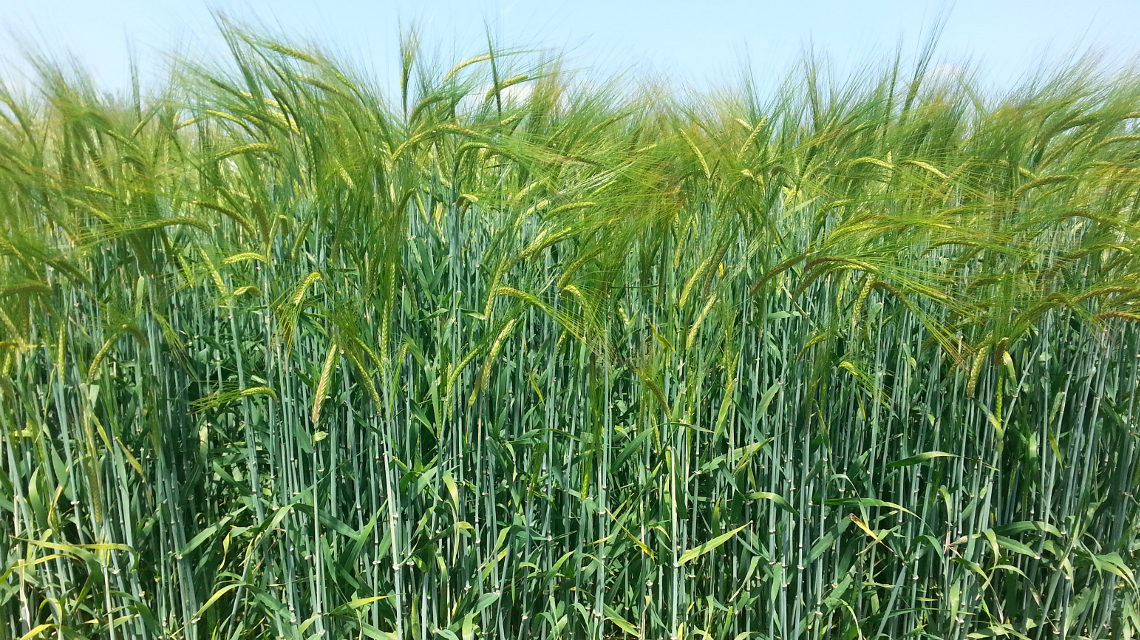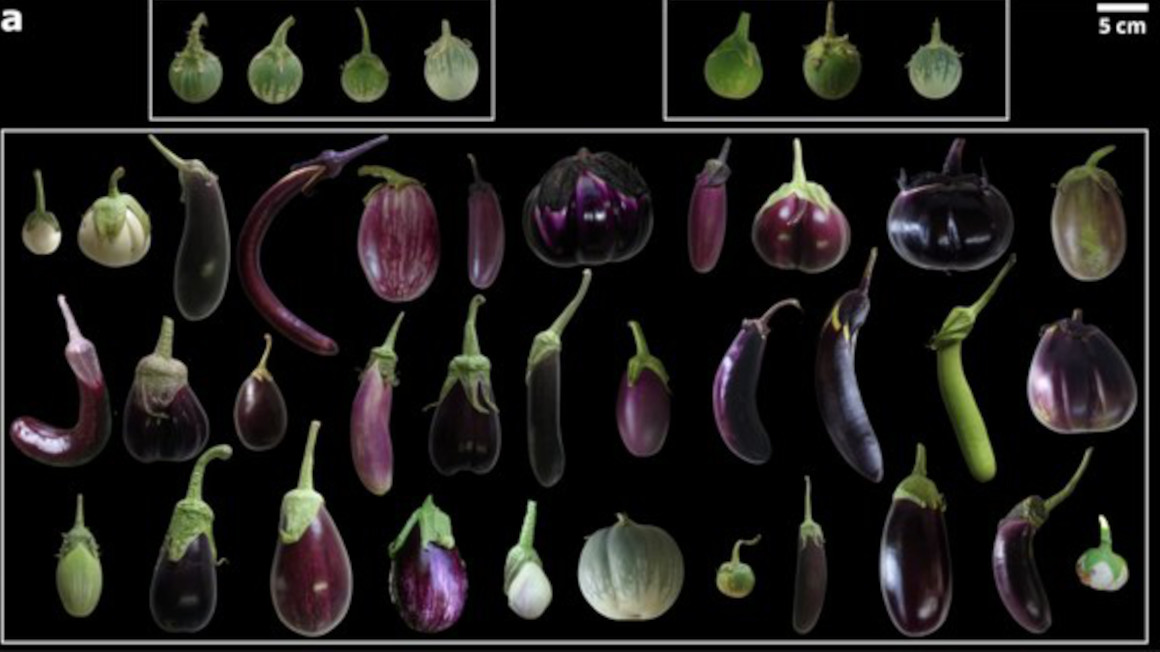
The development of agricultural crops that can meet the requirements of the future is demanding innovative approaches to research. Climate change and the growing world population are motivating researchers to look for new ways of safeguarding human nutrition. Here, knowledge about the genomic sequence of important agricultural crops represents a crucial basis for breeding new varieties that provide stable harvest yields even in varying weather conditions, and which are equipped to combat diseases and pests.
Crop genome in the research spotlight
Second only to wheat, the barley variety Hordeum vulgare is the most important cereal crop in Germany. In recent years, it has also been a focus of funding from the German Federal Ministry for Education and Research (BMBF) in the area of plant genome research. This has centred on the ‘TRITEX’ joint project, which was funded within the framework of the ‘PLANT 2030’ initiative and is pursuing the high-throughput sequencing of barley and other related crop genomes. The project is headed by Nils Stein from the Leibniz Institute for Plant Genetics and Cultivated Plant Research (IPK) in Gatersleben, and received a total of €3 million of BMBF funding between the years 2011 to 2015.
Alongside colleagues at the Helmholtz Center Munich, Stein and his team have been building on the foundations of earlier projects, in particular the exploratory work undertaken by the project GABI-BARLEX, which provided researchers with a first version of a ‘physical map’.
Broadening the physical map of barley
When molecular biologists speak of a physical map, they are referring to kind of directory for gene loci. To create this directory, the entire genetic material is rendered as thousands of small sections, which are arranged on a chromosome map according to their ‘coordinates’. This is no easy task: The barley genome spans seven chromosomes with total length of 5 billion base pairs (5.1 Gbp) – almost twice as large as the human genome.
“One of the principle goals of the TRITEX project was to achieve a higher resolution for the already existing physical map of the barley genome,” explains Stein. “In addition to this, we wanted to develop a second version of this map that could provide us with information on the genome-wide diversity of different varieties of barley.”
A more manageable genome
The physical map does more than provide a rough overview. It is a tool for making the genome more manageable and for enabling any subsequent sequencing. To achieve this, the entire hereditary material is first divided into small portions. Here, the DNA is isolated from the plant and separated into individual packets by special enzymes. These DNA fragments are stored in so-called BAC clones. The end result is a vast collection of BAC clones that require appropriate ordering, which itself necessitates the sequencing of the DNA of every BAC clone. “This allows us to compare the individual BAC clones and predict which are overlapping.”
A 9,000-piece puzzle
At the start of the project in 2011, the genome map of barley that was available to researchers comprised a total of 9,000 puzzle pieces. The goal of the TRITEX project was the uninterrupted arrangement of these individual pieces into the correct order. In this task, the researchers were assisted by molecular markers, namely characteristic and easily identifiable differences in the sequence. Before the complex genome of the barley could be mapped, however, it was necessary to generate sufficient quantities of sequence data.
Genome sequencing spurred by advances in technology
At this point of the project, the TRITEX researchers were greatly helped by a series of technical advancements. “In international collaboration with partners in Scotland and the US, we have already identified numerous molecular markers. This allowed us to directly commence with the sequencing of the barley genome,” says Stein. The original goal of the project, namely the high-density genetic anchoring of the physical map, could thus be achieved more quickly, giving the project a new orientation.
The barley chromosome 3H had already been deciphered by Stein and colleagues within the scope of a different project. The TRITEX team could now fully devote itself to sequencing the other chromosomes, with the aim of completing the barley genome. Here again, the plant molecular biologists benefitted from new techniques and existing international contacts. “The TRITEX project allowed us to sequence two further barley chromosomes in full: 1H and 4H. As a result, we had almost half of the barley genome available to us for sequencing,” says Stein. This represented an important international milestone. “In the framework of the International Barley Genome Sequencing Consortium (IBSC), we gained additional partners for sequencing the remaining chromosomes.”
Establishing new sequencing methods
The remaining four chromosomes were sequenced with the support of researchers from Scotland, England, Australia, Denmark, the USA, and China. This ultimately enabled the complete sequencing not only of all seven barley chromosomes, but also of those areas that had not yet been assigned to any chromosomes. But this was not all: “Our method of Chromosome Conformation Capture Sequencing (Hi-C) for sequence mapping, which is based on the 3D architecture of the genome, represents a new technique for barley. In TRITEX, this method set the course for the full sequencing.” Indeed, the linear arrangement of DNA sequences in the physical map was only possible thanks to the use of the Hi-C method. Nils Stein and his team provided the proof that the technology – to date predominantly used in human genetics – is also suitable for use within large genomes such as barley. The international consortium published their results in April 2017 in the journal “Nature”.
Tool for plant breeding
“The genome sequence and the positioning of individual genes now provides important information that breeders can utilise in the targeted breeding of specific characteristics,” says Stein. For example, by resequencing 90 genotypes from the gene pool of summer and winter barley, the International Barley Genome Sequencing Consortium has demonstrated that both gene pools differ greatly in their genome composition. In addition, with the compilation of the physical map for the wheat chromosome 6A, the TRITEX team has provided an important building block for the sequencing of the wheat genome. Despite this success, the picture of the barley genome is not yet 100% complete. In a new project titled SHAPE, which is also funded by the German Federal Ministry of Education and Research (BMBF), the plant researchers in Gatersleben are planning to create genome sequences for three greatly differing barley genotypes, with the aim of further perfecting information on the barley genome as a tool for plant breeding.
Author: bb


